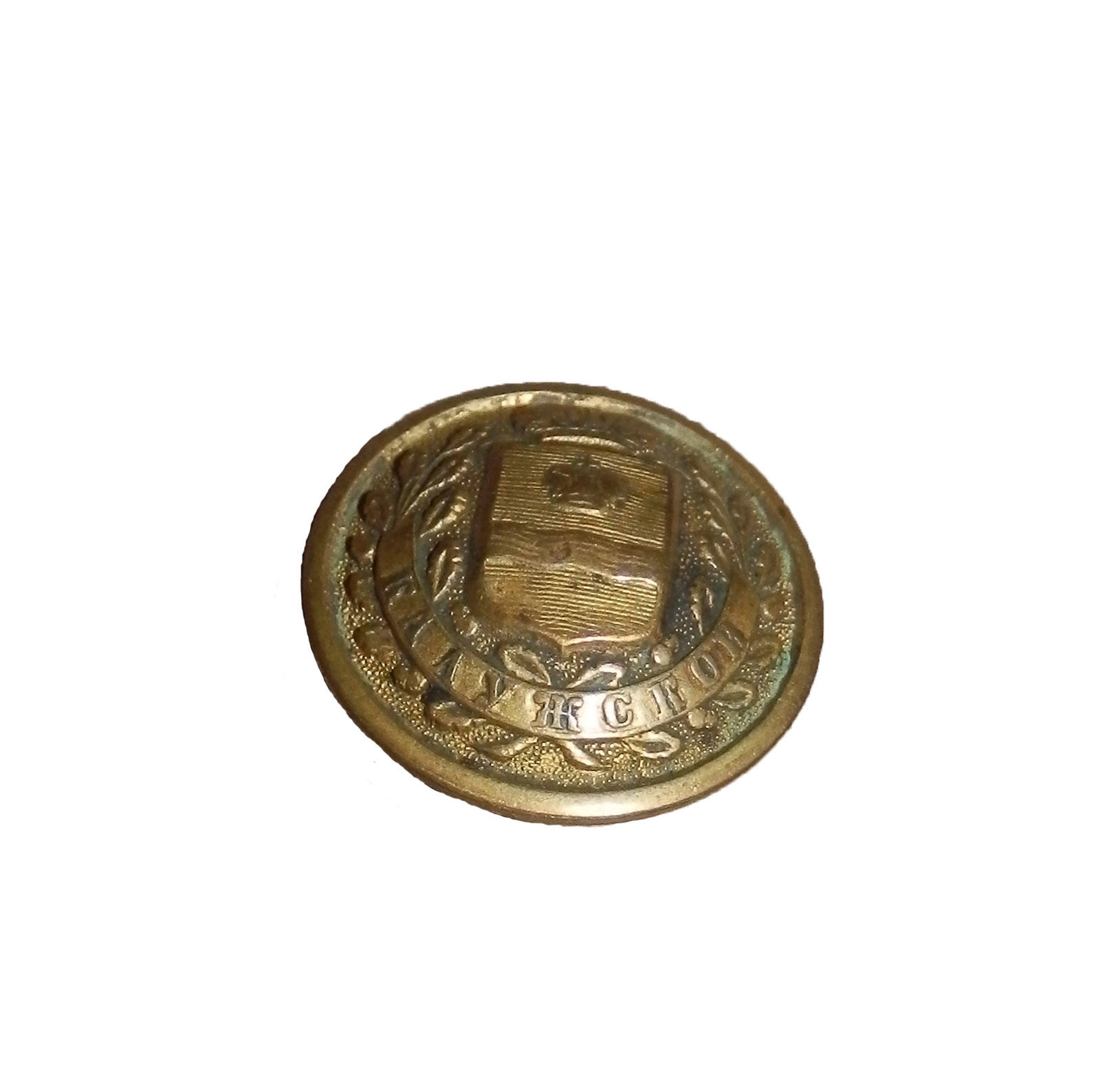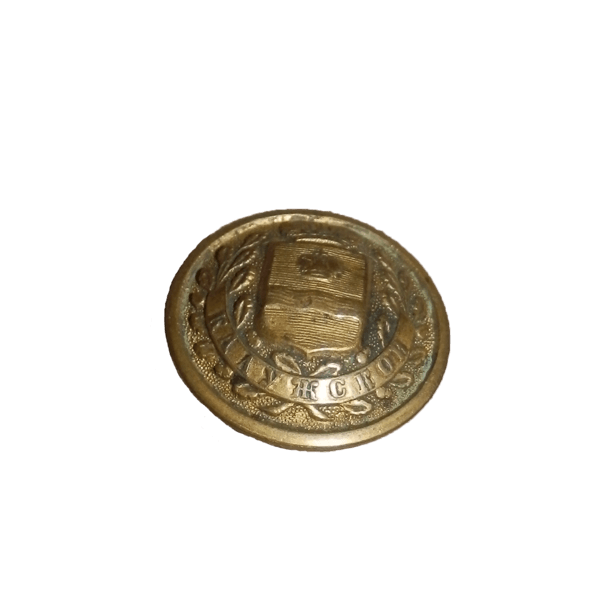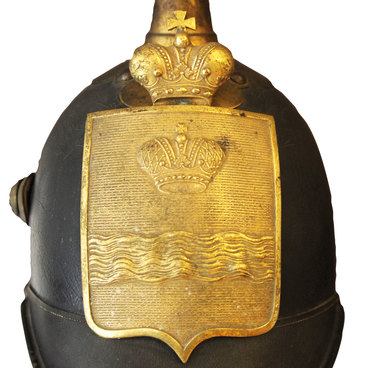The earliest known buttons date back to the time before the Common Era. Originally, they were used as dress ornaments rather than as fasteners. In Europe, buttons in their conventional function appeared as late as the twelfth or thirteenth century. The more buttons a person wore on his/her dress, the more aristocratic he/she would appear. Incidentally, Francis the First of France had over 13 thousand buttons sewn on one of his costumes.
In the 19th century Russia, with the introduction of obligatory uniforms for civil servants special buttons were manufactured for each such uniform carrying symbols of their respective agencies, positions, types of service, and the emblems of provinces for officials employed outside the capital. Provincial uniforms were distinguished by buttons of different colors. Specifically, in Kaluga they were made white until 1831.
Distinguishing colors of fabric and metal elements for provincial uniforms were abolished January 1, 1831, following which all buttons were made to a single standard: yellow with the emblem on their faces. Then, a Decree On Provincial Uniforms for Noblemen in Government Service issued in May 1832 described in detail and fixed their appearance: ‘yellow buttons with the emblem of each respective province under the Imperial Crown and the name of the province inscribed under it’.
The standard size of a uniform button was 22 millimeters. Some types of fasteners were smaller, about 12 millimeters – those were worn on lapels.
The Regulation for Civil Uniforms of February 27, 1834 said that ‘graded positions in Provincial Administrations, Medical Administration Offices, Quarantine Security, and all government offices shall have the emblem of the province in which said officials are employed on the buttons of their uniforms’. The Regulation carried an attachment with the illustration of the button approved for all provinces. Those buttons were made mostly from copper and tin, less frequently, from brass. Officials in the top six grades could have their buttons gold- or silver-plated.
On civil uniforms, buttons remained flat to 1858, until the Senate issued a Decree On New Patterns of Buttons for Ministries and Other Civil Administration Bodies, which prescribed that ‘the existing buttons be replaced by same-pattern buttons: matted, convex with a thin rim – in ministries and other administrative bodies, with the national eagle; in provinces, with the province emblem’.
In the 19th century Russia, with the introduction of obligatory uniforms for civil servants special buttons were manufactured for each such uniform carrying symbols of their respective agencies, positions, types of service, and the emblems of provinces for officials employed outside the capital. Provincial uniforms were distinguished by buttons of different colors. Specifically, in Kaluga they were made white until 1831.
Distinguishing colors of fabric and metal elements for provincial uniforms were abolished January 1, 1831, following which all buttons were made to a single standard: yellow with the emblem on their faces. Then, a Decree On Provincial Uniforms for Noblemen in Government Service issued in May 1832 described in detail and fixed their appearance: ‘yellow buttons with the emblem of each respective province under the Imperial Crown and the name of the province inscribed under it’.
The standard size of a uniform button was 22 millimeters. Some types of fasteners were smaller, about 12 millimeters – those were worn on lapels.
The Regulation for Civil Uniforms of February 27, 1834 said that ‘graded positions in Provincial Administrations, Medical Administration Offices, Quarantine Security, and all government offices shall have the emblem of the province in which said officials are employed on the buttons of their uniforms’. The Regulation carried an attachment with the illustration of the button approved for all provinces. Those buttons were made mostly from copper and tin, less frequently, from brass. Officials in the top six grades could have their buttons gold- or silver-plated.
On civil uniforms, buttons remained flat to 1858, until the Senate issued a Decree On New Patterns of Buttons for Ministries and Other Civil Administration Bodies, which prescribed that ‘the existing buttons be replaced by same-pattern buttons: matted, convex with a thin rim – in ministries and other administrative bodies, with the national eagle; in provinces, with the province emblem’.



